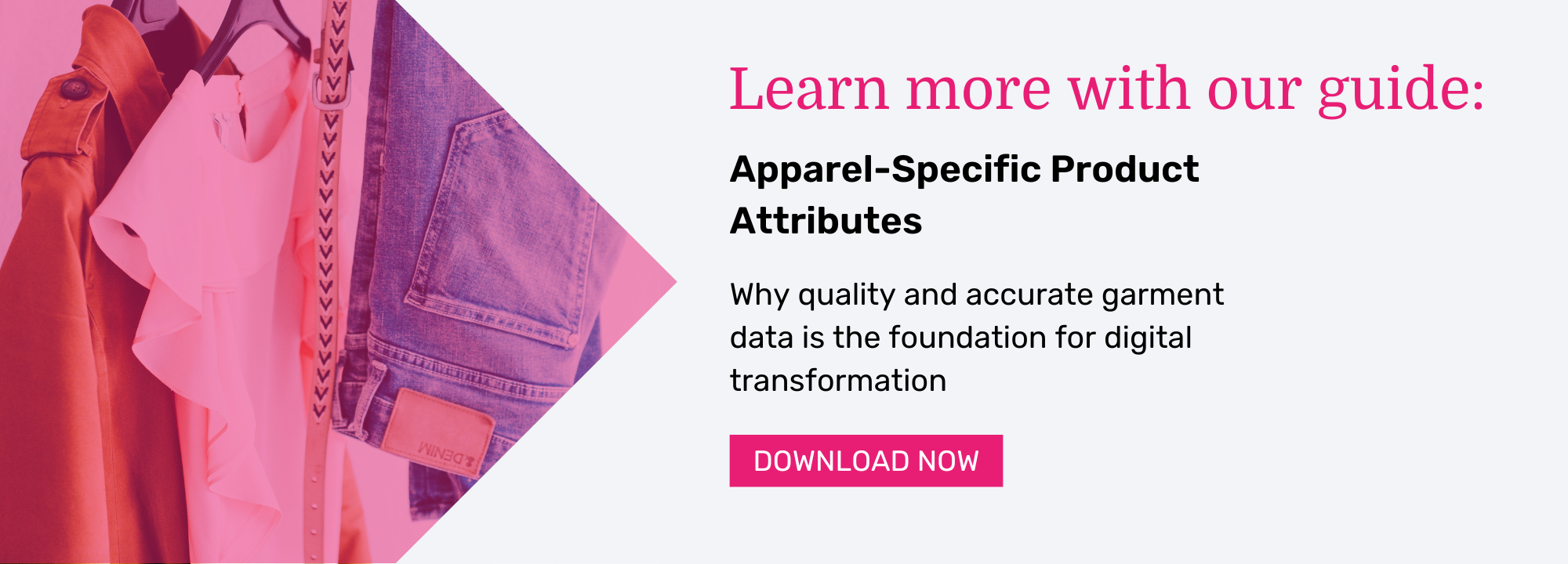Do you use data intelligently throughout your business? If product attribute tagging is done properly, it can feed into a number of areas and really help you excel.
-
1. Good quality, automated product tagging improves product discoverability. Data that describes the features of a product in detail will help improve rankings in search engines. It also increases accuracy of onsite search results.
-
2. It makes personalization relevant to the individual. Connecting with customers at the right time with the right product starts with understanding their specific preferences to product features.
-
3. Finally, reviewing demand forecasting at an attribute level can significantly increase sell-through rate.
On the flipside, inconsistent product data can be detrimental to your business. It affects customer searches and gives them frustrating online shopping experiences. For example, a merchandiser would start tagging yellow as lemon because that’s what the fashionistas were saying. But this was not what the customers were searching for, meaning they were not finding the products.
Discover how you can remove your attribution errors and make your attributes as beneficial as possible in this blog.
What are product attributes?
Product attribute definition: Product attributes are the features and characteristics that describe a product, in this case it’s the garment.
Clothing product attributes usually revolve around seven basic ones including neckline, length and color. However, if you want to give your customers the best possible experience, clothing attributes need to be as detailed as possible. This number should be at least thirty. These product attribute examples include pattern, occasion and texture group.
Whatever your industry, your ecommerce product tags should feed into all of your business decisions. And the better your data, the better results you’ll get.
The Product Attribution Process
Ideally, product attribution should be achieved through AI-powered data tagging software. Dressipi’s tagging tool automatically assigns each garment with around 35 attributes out of a taxonomy of over 1000.
Once the automated fashion product tags have been assigned, they go through a ‘quality assurance’ process by our machine learning modes. This nears 100% accuracy and addresses the most fundamental issues retailers experience - inconsistent product and brand data, attribution errors and unlabeled data.
By now, ecommerce businesses should have an automated way of tagging their products. It’s neither sustainable nor scalable to have people manually updated spreadsheets.
There are plenty of companies out there providing these AI data tagging solutions for various industries. Our advice is to look for an industry specific solution. Your product data will be significantly better if it’s built to understand the nuances specific to your vertical.
Product Attributes: Benefits and Uses
As mentioned earlier, an apparel data solution will add value in personalization, supply chain optimizations and operational efficiencies. Here are some of the uses and benefits:
AI product descriptions: AI generated product descriptions on your PDP can be generated from your product tags. This will guarantee consistency in the way your product descriptions are presented across your website, ensuring your customers know what to expect from your products and they can make informed shopping decisions. This is especially important when the customer cannot see or touch the product and may result in fewer returns.
Navigation and filters: With detailed attributes you’ll be able to provide nuanced filters on your PLPs. This means your visitors will be able to find exactly what they’re looking for without suffering from option fatigue.
SEO and site search: A shopper can’t buy what they can’t find. Clothing data that describes the features of a product in detail will help improve rankings in search engines. It also increases accuracy of onsite search results.
Personalized recommendations: To personalize well means connecting with your customers at the precise moment they intend to buy. This starts with understanding their specific preferences to product features. This enables you to present products within a context that resonates and with features they love.
Product data also ensures no product is ever completely new. It has a set of product attributes that already has visit and sales propensities to learn from. This means retailers can start using new products in personalized recommendations from the get-go.
This is especially important in fashion retail as sessions can be pretty short so we need to be able to make accurate predictions as early as possible, before the customer bounces. The customer’s perfect dress may be the new one and you don’t want you to miss out on additional revenue!
Personalized recommendations can be delivered across the customer journey. This includes on the home page, reordering the sort order and in the form of similar items.
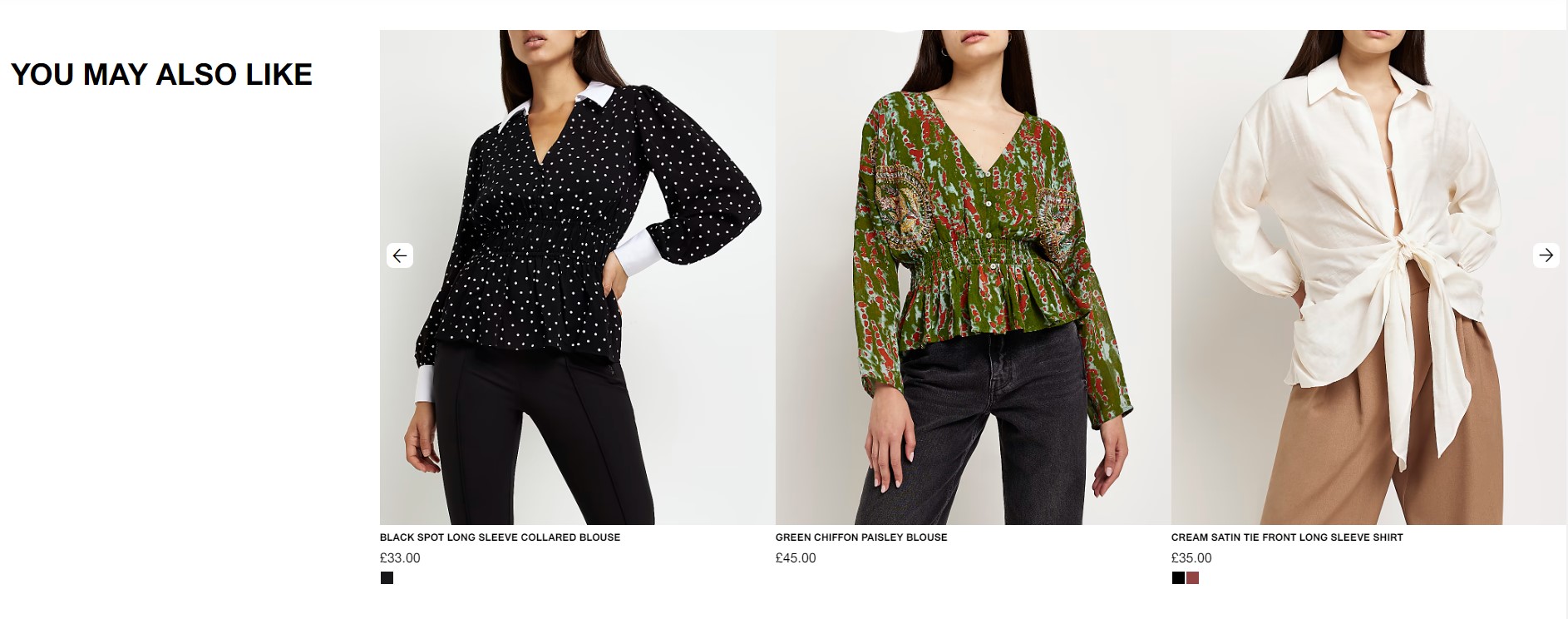
Personalized outfits: Detailed and deeper attributes lead to better product discovery experiences and can work collectively to create personalized outfits. For example, you can define which necklines on a jumper go with what collar types on a jacket.
Dressipi’s apparel data solutions mean we offer unbeatable outfit recommendations. These are tailored to the shopper, driving higher conversion, lower returns, and better, more loyal customers. Outfits are completely automated, completely personalized and always on-brand.
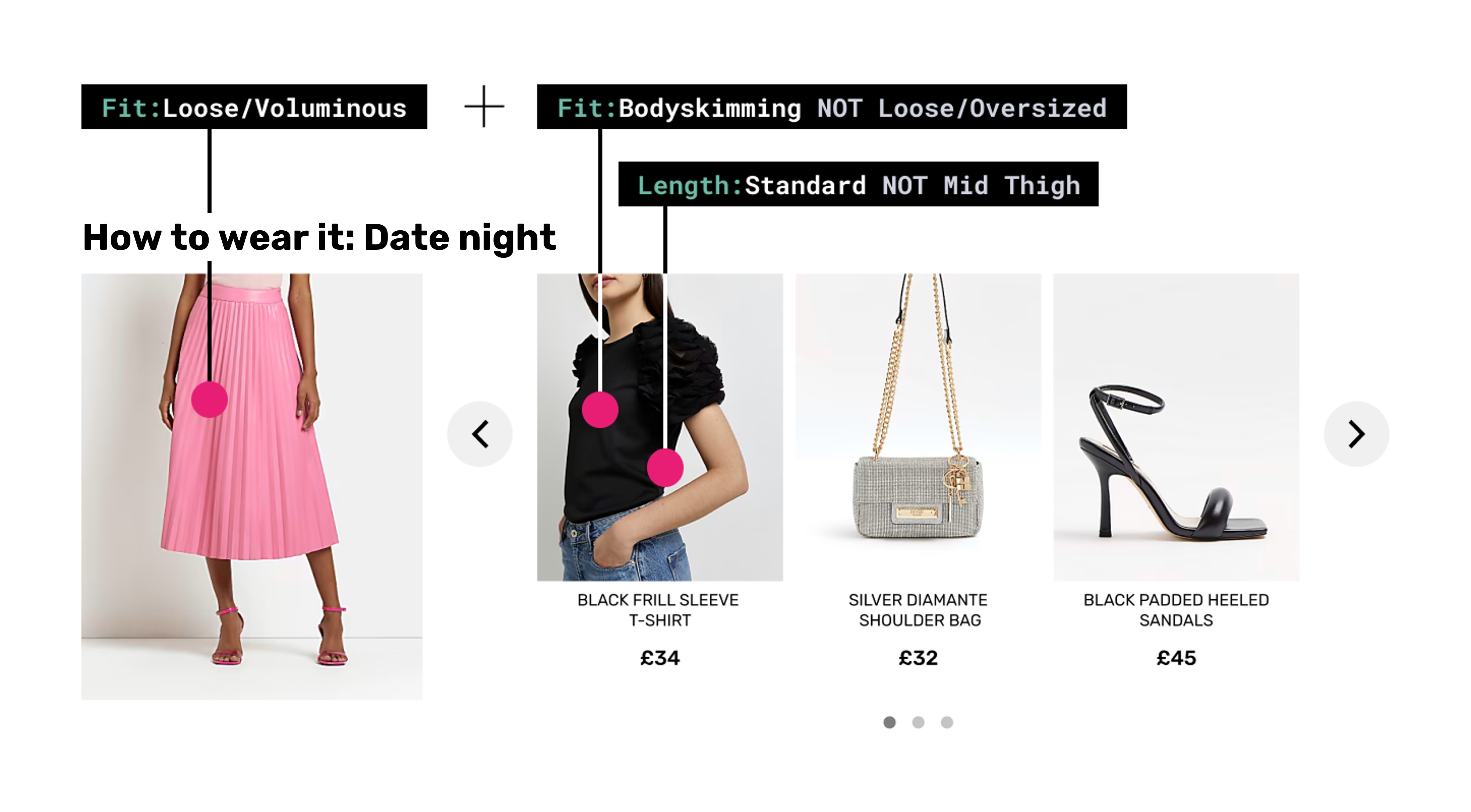
Size forecasting: Most of a retailer’s margin erosion is as a result of how they buy their products. With better product data, you can increase efficiency and sell-through by better forecasting which products, in which sizes to create and market. This is the easiest way for retailers to generate profits.
For example, more accurately determining your customers’ buying propensity for ‘balloon sleeves’ at customer size and shape level can be the difference between over or under buying into a trend. Dressipi demand forecasting with attributes can lead to 10% increase in sell-through rate and 3%pt increase in contributed margin.
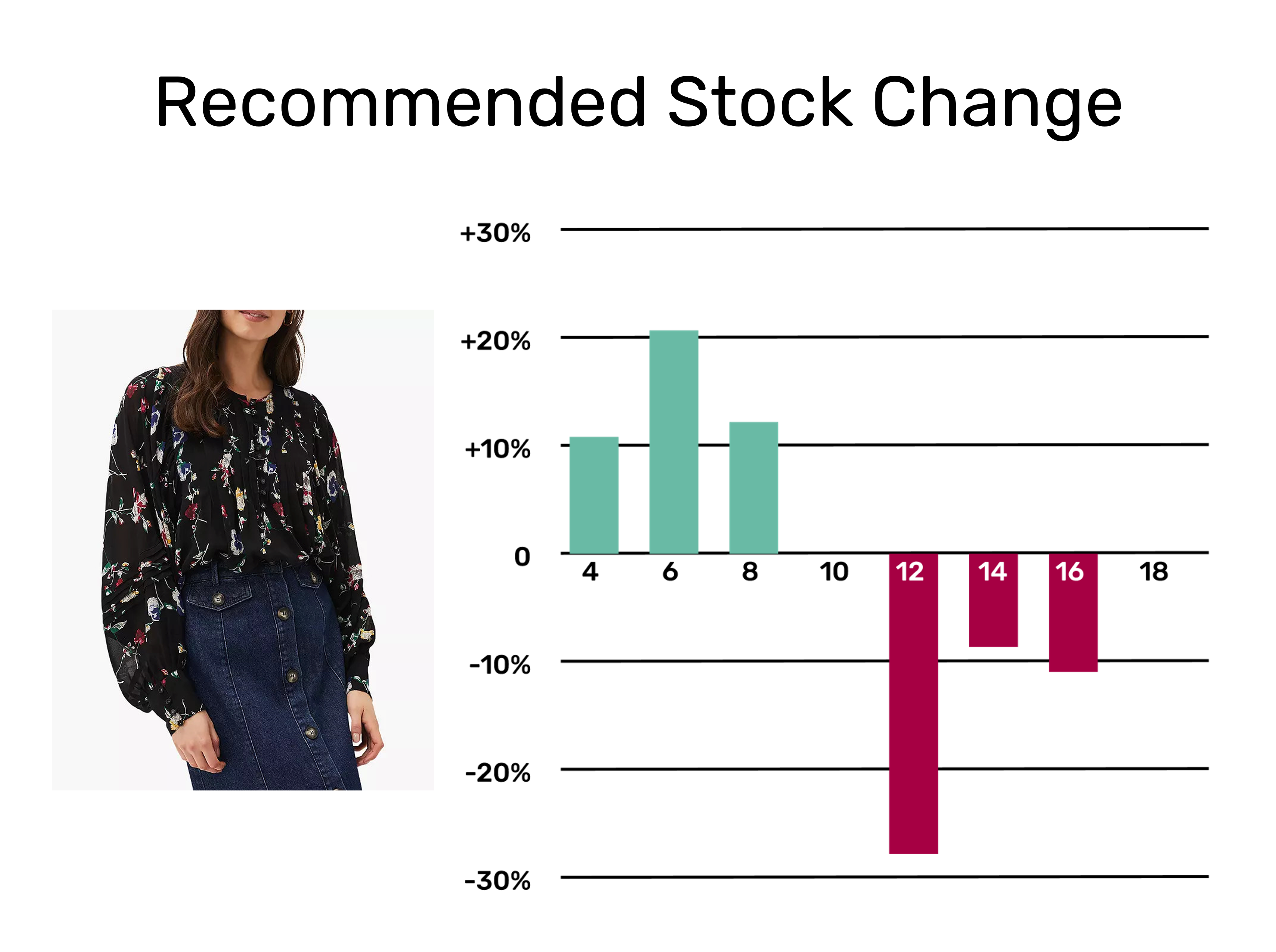
Returns: Good product tags in ecommerce will allow you to control your return rate. This is a must for maintaining, and even growing your operating profit.
It is firstly important to get the right product data in place. Then you can use that data to understand the quickest and easiest way to reduce returns without impacting revenue. By digging into your data, you can find out your customer’s propensity to buy and keep specific features. This can be done at a garment and size level.
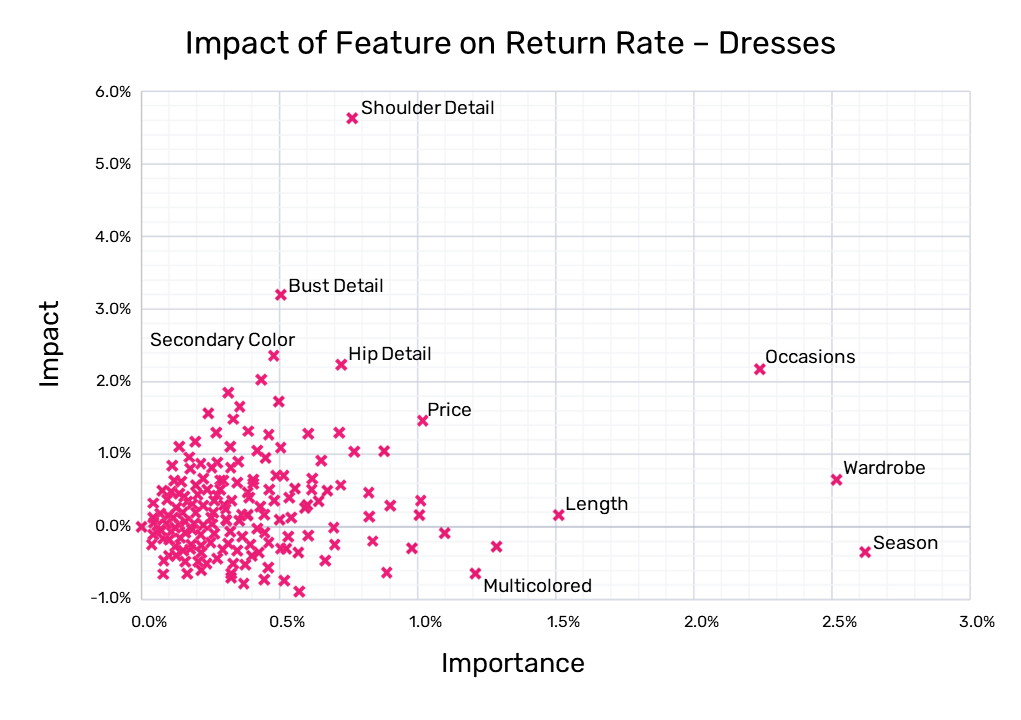
On the flip side, you can also see which product features are always selling out and restock them.
Final Thoughts
Having an efficient and consistent system for product tagging is a necessity for online retailing. It’s vital. From buying the right sizes to putting that product in front of the right customer at the right time. Your competitors will start using data to outsmart you and those who do that, will win.
The most helpful thing to do when starting your data journey is to create a set of really meaningful data and standardize it. However, manually tagging products is a time-consuming process. It usually requires retailers to hire additional human labellers that may be subject to bias or make mistakes. Make sure you get started with AI-powered product tagging to ensure you are keeping up with industry’s best practices.
We’ve got a case study that you might find interesting, follow the link below to read the full story


